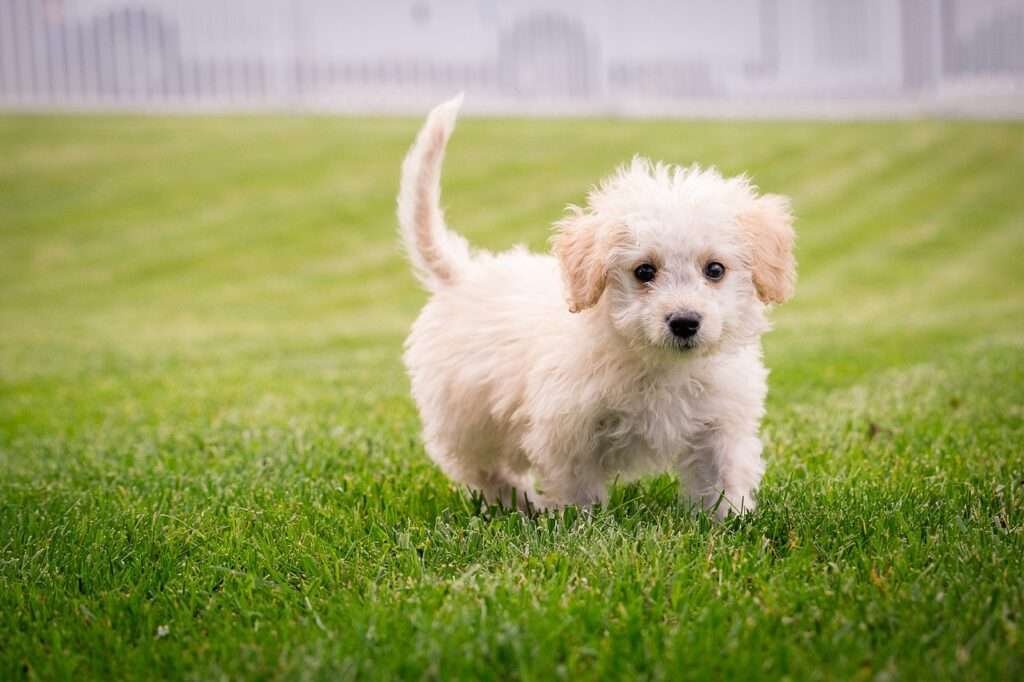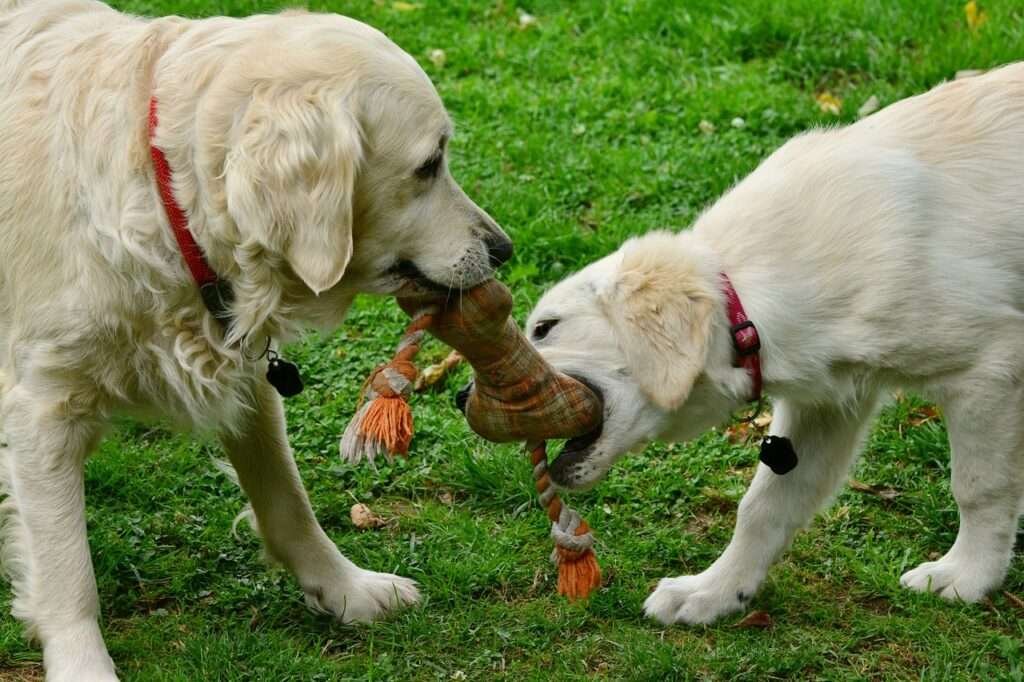Keeping a dog’s claws in perfect condition is imperative to avoid leg injuries. If you acquire the right tools and techniques, it’s possible to trim your dog’s nails yourself. This article provides a step-by-step guide to cutting your dog’s claws at home, along with some helpful tips to ensure the process goes smoothly.
Table of Contents
ToggleWhy is it Important to Cut Your Dog’s Nails?
Normally, dogs wear their nails down when walking on hard ground. However, this might not always happen, so it’s crucial to check their nails regularly. If a dog’s nails grow excessively, they may be unable to walk properly and comfortably, leading to awkward postures and serious health problems such as sprains or injuries to their paws. Additionally, long nails can grow into the skin, causing pain and potential infections.
How Often Should You Cut Your Dog’s Nails?
A dog’s nails should not exceed the pads of their paws. As soon as you see them approaching the end of the paw pad, it’s time for a trim.
What Do You Need to Cut Your Dog’s Nails?
To trim your dog’s nails at home without hurting them, you’ll need the appropriate tools:
- Clippers: For small and medium-sized dogs, use a pair of clippers, preferably with a guard. For larger dogs, a guillotine-style clipper is more effective. Choose the size that best suits your dog.
- Nail Grinder: If you’re unsure about using clippers or if your dog dislikes being manipulated, a nail grinder is an alternative. It allows you to file the dog’s nails to the perfect length.
- Styptic Powder or Silver Nitrate: These are essential for stopping hemorrhaging if you accidentally cut too much.
Understanding Your Dog’s Nails
Inside the nail is living tissue, which should never be cut as it would cause great pain. The tissue can be observed by looking at the nail in the light, revealing a line of pink coloration which doesn’t extend to the tip. This is your cutting limit. For dogs with black nails, place the dog on a flat surface and trim the nails on the ground to avoid cutting into the tissue.

Step-by-Step Guide to Trimming Your Dog’s Nails
- Familiarize Your Dog with the Clippers: Let your dog smell the clippers and give them a reward. Do this for a few days before the actual trimming.
- Create a Relaxed Environment: Accustom your dog to being touched on their legs. Have another person help hold the dog if necessary.
- Examine the Nail: Grab one of the nails and examine it to see the living tissue and know how far to cut.
- Cut the Nail: Use clippers in a quick and safe motion. If the dog has black nails, use a grinder and follow the product instructions.
- Handle Mistakes Calmly: If you cut too much, stay calm, stop the bleeding with styptic powder, and reassure your dog.
Emergency Steps for Overcut Dog Nails: A Pet Owner’s Guide
Accidentally trimming your dog’s nail too short can be an alarming experience for both you and your furry friend. However, knowing how to address the situation swiftly and effectively can alleviate stress and ensure your pet’s well-being. Here’s what to do if you cut your dog’s nail too much:
- Maintain Composure: Your dog is sensitive to your emotions, so staying calm is crucial. If you accidentally cut into the quick, it will cause your dog pain and surprise, but your composed demeanor can help soothe them. Use a gentle, reassuring tone and offer treats to comfort and distract your pet.
- Use Styptic Powder: Apply a mixture of cornstarch and baking soda to your hand. Carefully dip the bleeding nail into the powder, repeating if necessary until the bleeding stops. Avoid wiping away the blood beforehand, as it aids coagulation. Be prepared for your dog to react to the initial sting of the styptic powder.
- Bandage the Nail: Once bleeding has stopped, continue to apply gentle pressure with a cloth, ensuring not to squeeze the paw. Keep your dog from walking for at least 5 minutes. After confirming the bleeding has ceased, rinse the affected nail with lukewarm water and apply a bandage to prevent licking and potential infection.
- Consult a Veterinarian: If the bleeding doesn’t stop after 1 hour, proper clotting might not be occurring, and you should seek veterinary assistance immediately. Additionally, if the toe becomes red, swollen, or shows no improvement after a few days, a visit to the vet is warranted.
How Long Does it Take for a Dog’s Nail Quick to Heal?
That depends on how deep the wound is. In the case of cutting the nails a bit too short, it will seal up and become less annoying in about the same time a shallow cut on your finger would, usually a couple of days. In the case of a deeper wound, such as the nail being torn loose, it will take several weeks to fully heal and the nail may never grow back quite the same.

How to Handle a Dog if He Doesn’t Want His Nails Trimmed
Trimming a dog’s nails is a daunting pet care task that many owners dread. Dogs often fear nail clipping, and their struggles can make the process challenging and stressful. The tendency to procrastinate can exacerbate the difficulty, and sometimes, a minor but painful injury may occur, adding to the anxiety. Drawing on my experience as a dog groomer and behaviorist, here are strategies to handle a dog that doesn’t want its nails clipped.
Consider Professional Assistance
There is absolutely nothing wrong with enlisting the help of a professional groomer, veterinary technician, or veterinarian to cut your dog’s nails. While it is an expense and a hassle, ensuring the nails are trimmed properly can be worth it. As a behaviorist, I emphasize the relationship between people and dogs. It’s preferable to have any negative associations linked with a groomer or someone at the vet’s office rather than with you.
Keeping Your Dog Engaged
One effective method is to keep your dog occupied with something enjoyable while you work. A Kong or other hollow toy stuffed with irresistible treats like steak, hamburger, peanut butter, turkey, or cream cheese can help your dog relax and ignore what you are doing. A real bone, chew toy, or any extra special treat may also suffice. Let your dog have the treat long enough to become deeply engaged with it before introducing the clippers. Ensure that this special treat is given at other times as well to avoid creating an association with nail clipping.
The One Nail at a Time Approach
Another technique is to clip just one nail and then immediately take your dog for a walk. By “immediately,” I mean cut one nail, then grab the leash the next second and say, “Let’s go for a walk.” Doing this once a day before a walk can trim all your dog’s nails in about three weeks, and then you can start over. After a few weeks, many dogs will begin to associate nail clipping with the enjoyable event of going for a walk. Eventually, you can clip more than one nail at a time, working up to trimming all the nails before the walk.
Employing a Physical Hold
For some dogs, a physical hold may be necessary. This method works best with two people. One person can get the dog on her side, kneel by her back, lean over her body, and hold onto the two legs on the floor side. This position minimizes the dog’s movement, allowing the second person to clip the nails. This hold is best for dogs who struggle but do not use their mouths to stop you. If your dog behaves aggressively and tries to bite, this hold is not recommended.
Managing Aggressive Behavior
Aggression during nail clipping is very common. If this is the only situation that brings out aggressive behavior in your dog, consider yourself lucky but stay cautious. Using a muzzle on your dog is perfectly acceptable. It is advisable to get your dog accustomed to the muzzle before using it for nail clipping. Once your dog is comfortable with the muzzle, put it on, clip the nails, and finish the task quickly. Using a muzzle can be more humane than engaging in a prolonged struggle.



